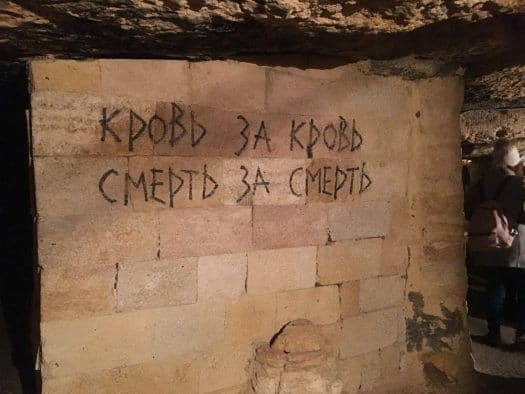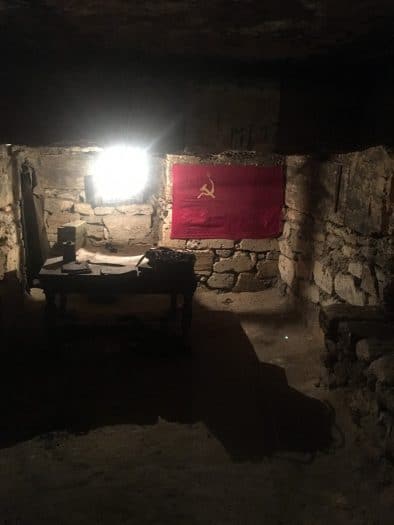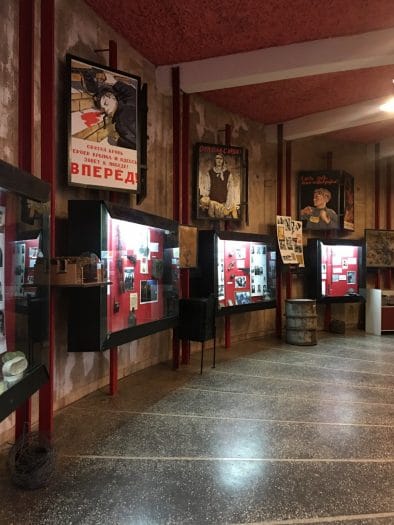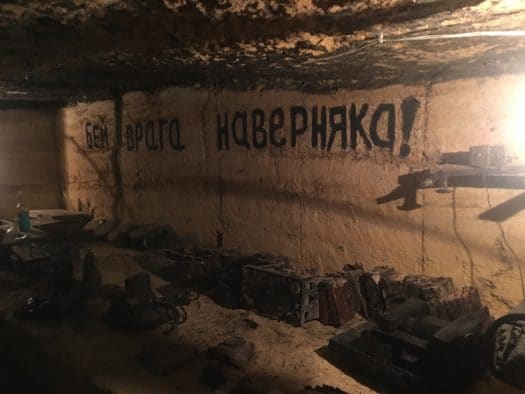Tour of the Odessa Catacombs
Travel and excursion included in PCON program, Fall 2017
When I found out that our class was planning a trip to Odessa, Ukraine, I instantly pictured gorgeous architecture, quaint streets, and relaxing beaches. While Odessa possesses all of these characteristics, there were two other factors that drew my attention the most when I arrived: the short buildings and the absence of an underground metro system. Since Odessa is one of the largest cities in Ukraine and serves as a key location for importing/exporting, I expected to see loftier buildings and busier public transit. I asked our tour guide why the city was constructed this way, and the answer I received was quite intriguing.
Underneath Odessa and the surroundings areas, there is an extensive network of tunnels that are the result of limestone mining that started in the 19th century. The catacombs are so expansive that the construction of a subway system would be impossible. Many civil engineers are concerned that the weight of the city will cause the underground matrix to collapse, so all buildings are kept to a minimum height in order to control weight distribution around Odessa.
As of today, over 1000 entrances to the catacombs can be found, but only one is actually accessible to the public. The Museum of Partisan Glory in Nerubayske, Ukraine (just north of Odessa), is the only gateway into the underground network, and offers tours in Russian, Ukrainian, and English. The museum starts at the entrance to the catacombs, and includes a guided walk-through of the main sections of the tunnels. The tour finishes at the small museum building, which houses many propaganda posters and artifacts from World War II.

During the Second World War, the catacombs were used as a hiding spot among Soviet partisans who were evading the Axis Forces. Families would go deep inside the tunnels and establish long-term living quarters. Throughout the tour, we were shown the various rooms where day-to-day activities took place for those in hiding. The Soviet partisans established sleeping quarters, kitchens, armories, schools, and laundry facilities throughout the tunnels.


At the end of the tour, our guide explained that the catacombs are so extensive and complex that today’s top archeologists and cartographers still have yet to uncover the entirety of the underground system. Since the catacombs were built 60 meters below the ground, the entire system is soundproof and extremely cold year round. Only special teams of archeologists are allowed to enter the tunnels without supervision because many people have gone missing after trying to explore the labyrinth.
All in all, my tour of the Odessa Catacombs was a phenomenal experience. I had no knowledge of the tunnels before I arrived in Odessa, and the tour certainly taught me quite a bit about life in Odessa during World War II. With the recreated partisan camp and all of the dated artifacts, I was able to get a true sense of how life was lived during those times. The museum seeks to inform visitors of the often-forgotten history of the Soviet partisans, while honoring all those who served in the Great Patriotic War. Overall, my entire experience was beyond insightful and immensely educating. If you ever find yourself in Odessa, Ukraine, the Museum of Partisan Glory is an absolute must-see!

Museum of Partisan Glory in Odessa, Ukraine
Odessa region, Nerubaiskoe village
Open 9:00-16:00
Closed Mondays
Website







